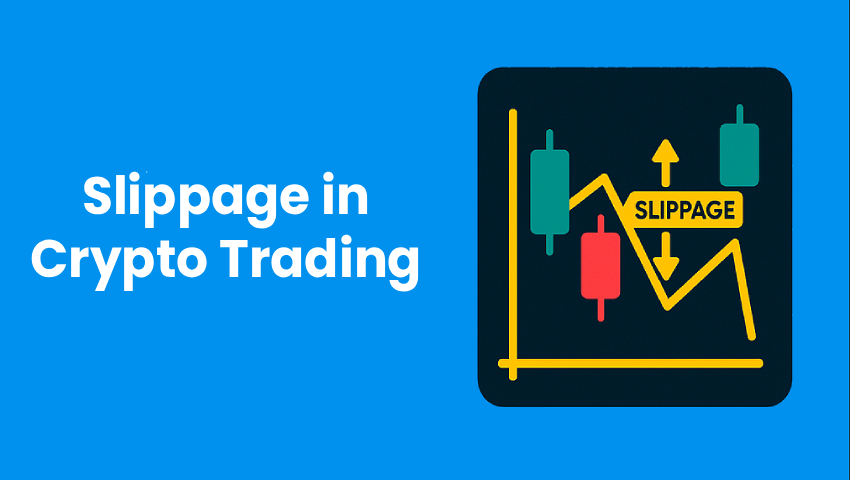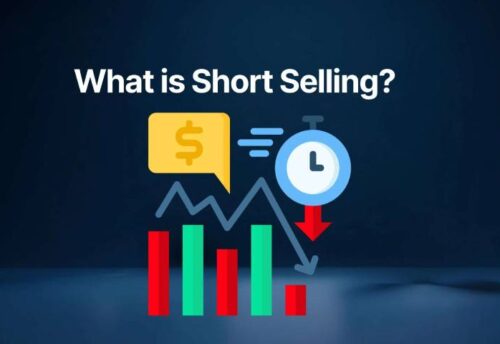
- 05/09/2025
- MyFinanceGyan
- 213 Views
- 5 Likes
- Cryptocurrency, Investment
What is Slippage in Crypto Trading & How to Minimise It?
In the fast-paced world of cryptocurrency trading, you may have come across the term “slippage.” Slippage simply refers to the difference between the expected price of a trade and the actual price at which it is executed. It is a common phenomenon in crypto markets due to factors such as high volatility, low liquidity, large order sizes, and network congestion. While slippage can sometimes work in your favor, it can also result in unexpected losses if not managed properly. In this article, we’ll break down what slippage is, why it happens, and most importantly, how you can minimize its impact to protect your profits and improve your trading experience.
What is Slippage & Why Does It Happen?
Slippage occurs when there is a mismatch between the price you expect to pay (or receive) for a trade and the actual execution price.
- Positive Slippage (Price Improvement): When a trade is executed at a better price than expected, giving you more profit or lower costs.
- Negative Slippage: When a trade is executed at a worse price than expected, leading to losses or reduced profits.
Since crypto markets move rapidly, slippage is something every trader will encounter. Understanding its causes is the first step toward controlling it.
Main Causes of Slippage in Crypto Trading:
- Market Volatility: Cryptocurrencies are notoriously volatile, with prices often changing within seconds. During periods of high volatility, prices can move before your trade is executed, leading to slippage.
- Liquidity Issues: Liquidity measures how easily an asset can be bought or sold without affecting its price. Highly liquid coins (like Bitcoin or Ethereum) usually have less slippage compared to smaller altcoins with low liquidity.
- Order Size: Placing large orders in a low-liquidity market can move the price against you. For example, a massive buy order can drive prices higher as it gets filled, causing negative slippage.
- Network Congestion: On decentralized exchanges (DEXs), heavy network activity can slow transaction confirmations. By the time your trade is processed, the price may have changed, causing slippage.
How Slippage Works – A Simple Example:
Imagine you place a market order to buy Ether at $3,000. However, due to rapid price changes, your trade gets filled at $3,030. This difference of $30 per unit is negative slippage. Similarly, if your order gets filled at $2,980, you benefit from positive slippage. The impact becomes more significant with larger order sizes or in less liquid markets.
How to Minimise Slippage in Crypto Trading:
While slippage can’t be eliminated completely, you can reduce its impact with the right strategies:
- Use Limit Orders: Instead of market orders, use limit orders where you set the maximum price you’re willing to pay (for buys) or the minimum price you’re willing to accept (for sells). This ensures you don’t get filled at unfavorable prices.
- Trade During High Liquidity Periods: Trade when liquidity is highest (usually during peak market hours). High liquidity reduces price fluctuations and improves order execution.
- Choose a Reliable Exchange: Select exchanges with deep liquidity pools and high trading volumes. Popular centralized exchanges (CEXs) and strong decentralized exchanges (DEXs) reduce the risk of slippage.
- Set Slippage Tolerance Levels: Many platforms allow you to set a slippage tolerance (e.g., 0.5%, 1%, or 2%). This lets you decide how much deviation from your desired price you’re willing to accept.
- Break Large Orders Into Smaller Ones: If you’re trading in large volumes, divide your order into smaller chunks. This avoids sudden price swings and minimizes the market impact of your trades.
- Pay Higher Gas Fees or Use Layer-2 DEXs: On DEXs, paying a slightly higher gas fee can prioritize your transaction and reduce delays. Alternatively, using Layer-2 solutions (like Arbitrum, Optimism, or Polygon) offers faster, cheaper transactions with reduced slippage.
Key Takeaway:
Slippage is a normal part of trading in fast-moving markets like crypto. While it can sometimes be beneficial, negative slippage can eat into your profits if not managed properly. By using tools like limit orders, trading on liquid exchanges, splitting large trades, and setting slippage tolerance, you can reduce its impact and trade more effectively.
Start investing in cryptocurrencies today. Open a free account on CoinDCX: https://join.coindcx.com/invite/n75xR
Disclaimer: The views in this article are solely for educational purposes. This is not financial advice or a product recommendation. Please do your own research before investing in cryptocurrencies.



